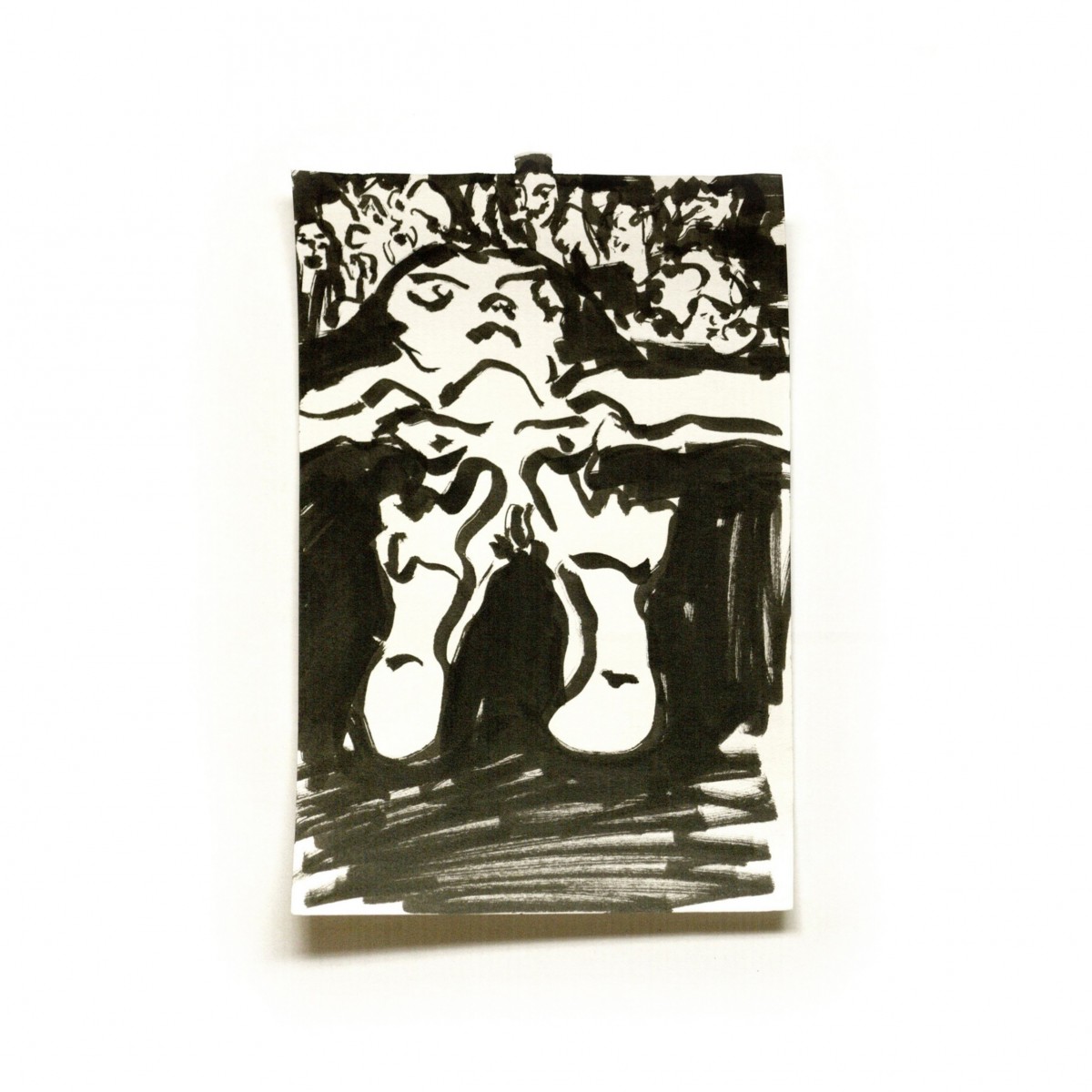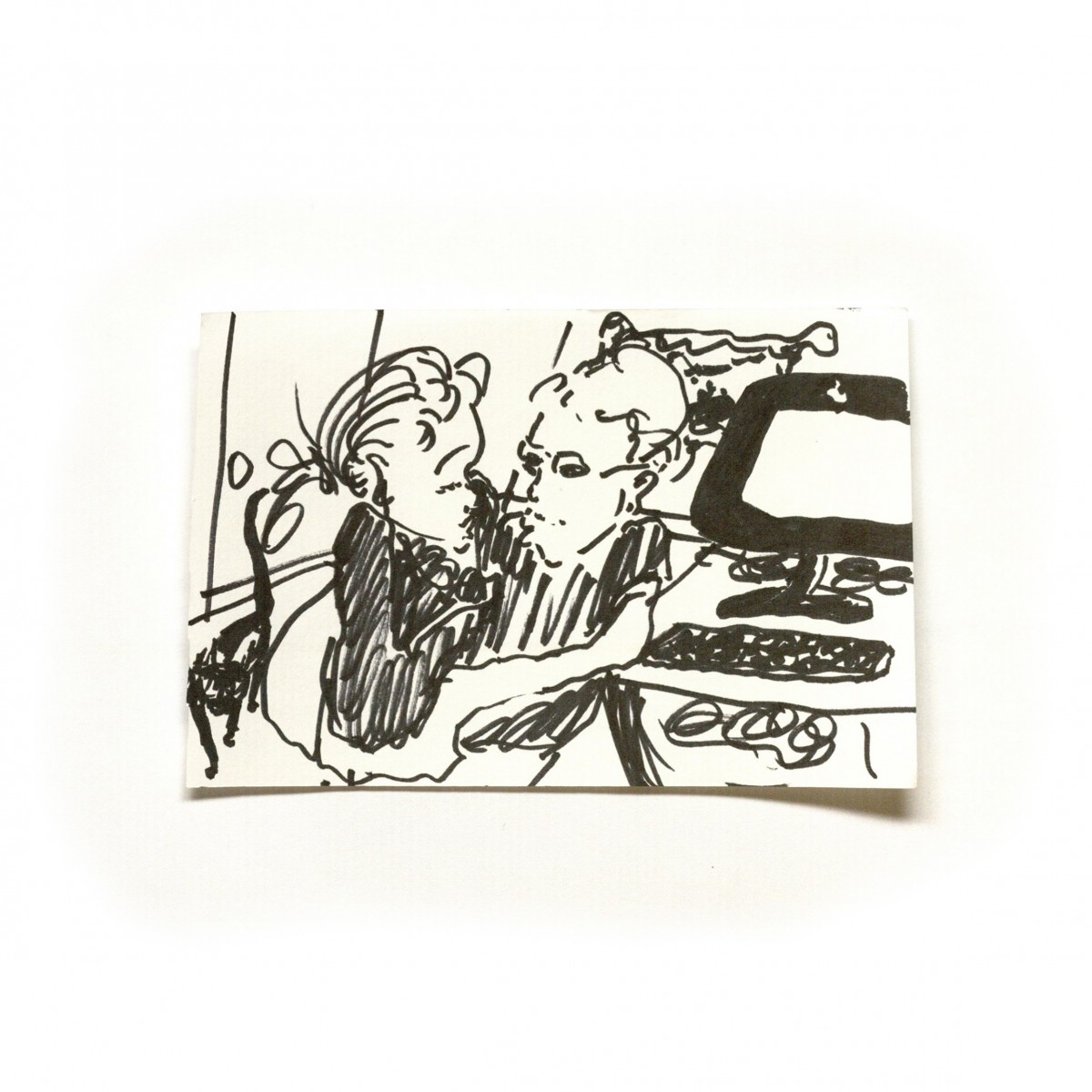Jessamyn Plotts a New Woman at Inner Space a Chamber Gallery explores the universe of the college fraternity from an
alternative perspective. The frat has become a mysterious void in our culture, not unlike the enigmatic power often associated
with feminine interiors: the home, the vagina, the impenetrable, unintelligible and maybe unintelligent mind. For the uninitiated,
the frat is sometimes a site of play, and at others a site of violence. The frat has frequently been portrayed as a site of total
freedom for men, sexual depravity or promiscuity for women.
It is also a construction site for cultural identity. Our idea of what it means to be a woman of value is produced within the
fraternity through social interactions, validation by the entrance to parties, marriage, sex, or dating, and by widely disseminated
information dispersal outlets such as Total Frat Move. As a traditionally white and male institution, the frat holds a powerful
weight of race and gender, asserting the continuation of racial and hetero-normative lifestyles into a future that has never been
more ambiguous on these fronts. This is not to devalue the accomplishments and immeasurable impact felt by fraternities and
sororities representing communities of color, but to note the predominant cultural understanding of fraternities as spaces of white
male privilege.
For women, frats often function as a site of simultaneous validation, shame, and intense sexual fear. Date rape, roofies, alcohol
poisoning, hazing rituals and the constant monitoring of the female body all contribute to a need for approval shot through with
fear and incentives to perform and perfect the appearance of traditional, sexualized femaleness. Even as fraternities become
racially and culturally diverse, women’s role in the frat world as objects of sexual desire is obviously based in illusions of white
femininity as put forward by the media, Hollywood, etc. This is made clear by the“Girls” section of Total Frat Move, which I
reference frequently as I conduct research for this project. Thirty-five of the first fifty-four women featured in this section are
white and blonde.
Increasing tension and violence around fraternity and sorority houses over the past two years suggest an intensification of cultural
and ideological performance in response to shifting sexual and racial paradigms. Behavior has become desperate, frantic,
and sometimes lethally performative. Consider the suspension of fraternity activity on both the CalPoly and Texas
State campuses following instances of racism and death, both this year. These are only two of what seems like constant events
that are particularly alcohol/drug related, sex/gender/body related, or race related.
These very real events disappear beneath the endless pile of frat house representations in the form of entertainment industry
production. Hollywood movies, in particular, have carried the myth of the fraternity for decades now, perpetuating the image of
an undulating drunken sex chamber where anything goes and all will be forgiven. From "Animal House" to "Old School," we are
asked as Americans to condone the youthful exploits of white men. "Neighbors 2" complicated the landscape only minimally by
collaging the visual and behavioral attributes of frat boys onto the bodies of female actresses. Visually, the film is a repeat of
former frat iterations.
A New Woman addresses the frat as a site of extreme action, extreme performance, and extreme power in the psyche of
Americans of any gender or race, whether as fear or as self-validating energy. Rarely has this site been addressed in an art
context, where people tend to resist what the frat and frat boy represent. Considering American politics post-Trump, now seems
like the right time to bridge the gap between these worlds.
Official Site Facebook Instagram
Price
- FREE!








COMMENTS